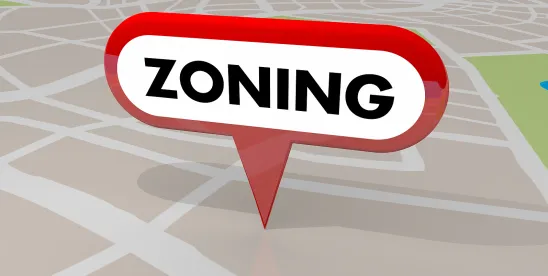When Congress enacted the One Big Beautiful Bill Act (the Bill), it permanently established, with some modifications, the federal Opportunity Zone tax incentive program (the OZ Program). Below is a summary of the current OZ Program and the key changes included in the Bill.
Prior OZ Program Structure
Prior to the Bill’s enactment, taxpayers could temporarily defer tax on capital gains through December 31, 2026 by investing the capital gains in a qualifying opportunity fund (QOF). The QOF would then invest, directly or indirectly, in qualifying assets in opportunity zones, i.e., census tracts that meet certain eligibility criteria and are selected by the state’s governor.
In addition to the gain deferral, taxpayers received a 10% basis step-up if they held their investment for five years, an additional 5% basis step-up if they held it for seven years, and a permanent exclusion of taxable income on any new gains if they held their investment for at least 10 years.
Rolling Deferrals
Beginning January 1, 2027,the Bill makes the OZ Program a permanent tax incentive program by repealing the December 31, 2026 sunset date and implementing a five-year tax deferral period.
Accordingly, capital gains invested in a QOF will only be recognized (i) on the date the QOF investment is sold or exchanged, or (ii) five years from the date of the QOF investment. Please note that investments made prior to January 1, 2027 are still subject to the rules existing through December 31, 2026.
Basis Increase
In addition to the rolling five-year tax deferral period, the Bill provides taxpayers with a 10% basis increase on their QOF investment if the investment is held for the full five-year period. Thus, only 90% of the deferred capital gain is taxed.
Qualified Rural Opportunity Fund
The Bill creates a new class of QOF, a “Qualified Rural Opportunity Fund” (QROF), which provides investors with enhanced tax benefits. The QROF operates the same as a QOF, except the 90% “good” asset test is satisfied by investing in a qualified opportunity zone (QOZ) comprised of a “rural area,” defined as “any area other than (I) a city or town that has a population of greater than 50,000 inhabitants, and (II) any urbanized area contiguous and adjacent to a city or town described in clause (I).”
The benefit of investing in a rural QOZ is that investors will receive a 30% basis increase on QROF investments if held for the full five-year period, as opposed to a 10% increase for regular QOFs. Additionally, the “substantial improvement” requirement is reduced to 50% of adjusted basis, as opposed to 100%, making it easier for renovations in rural areas to qualify.
New QOZ Designations
In 2026, all state governors will propose new QOZs, which after certification by the U.S. Department of the Treasury, will qualify for 10 years, with the next 10-year period beginning on January 1, 2027. Going forward, however, more restrictive requirements will apply: (i) census tracts will qualify as QOZs only where median family income does not exceed 70% of the metropolitan area median family income (rather than the current 80% standard); (ii) the alternative poverty rate test of 20% or more is modified to include an “anti-gentrification” trigger that disqualifies a census tract if the median family income is over 125% of the applicable state or metropolitan area median family income; (iii) the contiguous tract rule that qualified census tracts contiguous to a “low-income community” has been repealed; and (iv) the general QOZ designation for low-income communities in Puerto Rico has also been repealed.
New Reporting Requirements
The Bill creates a new reporting regime for QOFs and QROFs. Information that must be reported to the IRS includes: (i) the North American Industry Classification System code for the QOF’s trades or businesses; (ii) the population census tract(s) in which the QOZ business property is located; (iii) the aggregate value of owned and leased tangible property of the QOF; (iv) the number of residential units held by the QOF; and (v) the average monthly number of full-time employees. The Bill imposes a $10,000 penalty per return, or a $50,000 penalty per return for QOFs with more than $10 million in assets for failing to comply with the new reporting requirements.




 />i
/>i

